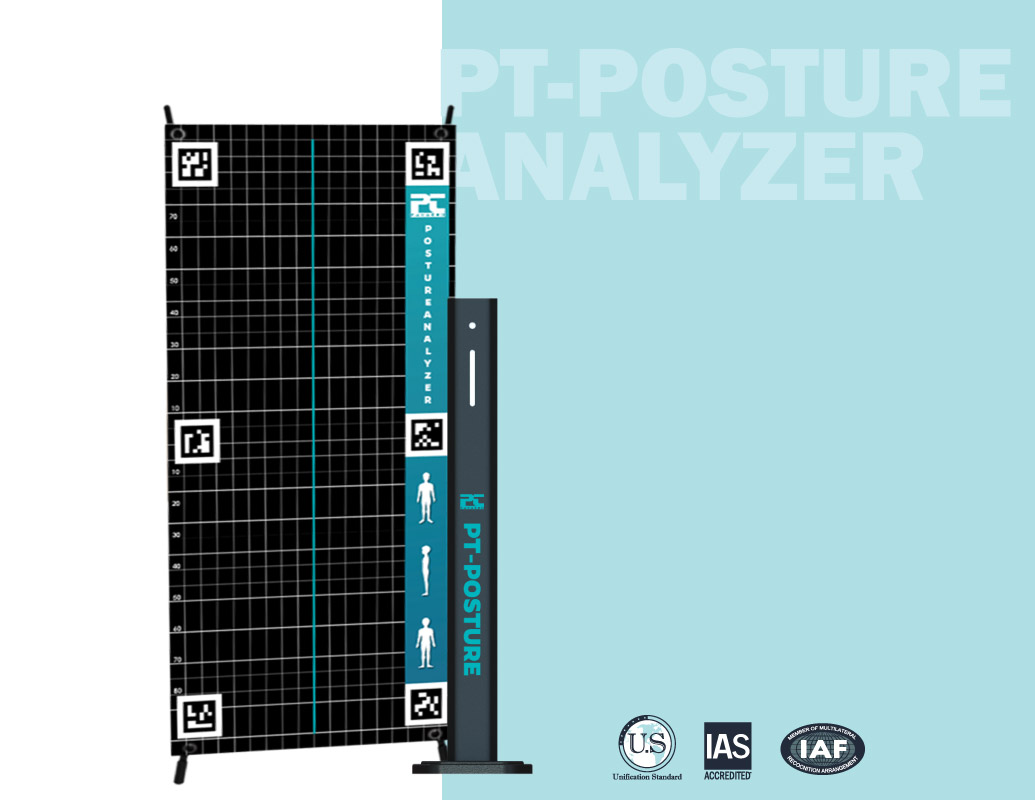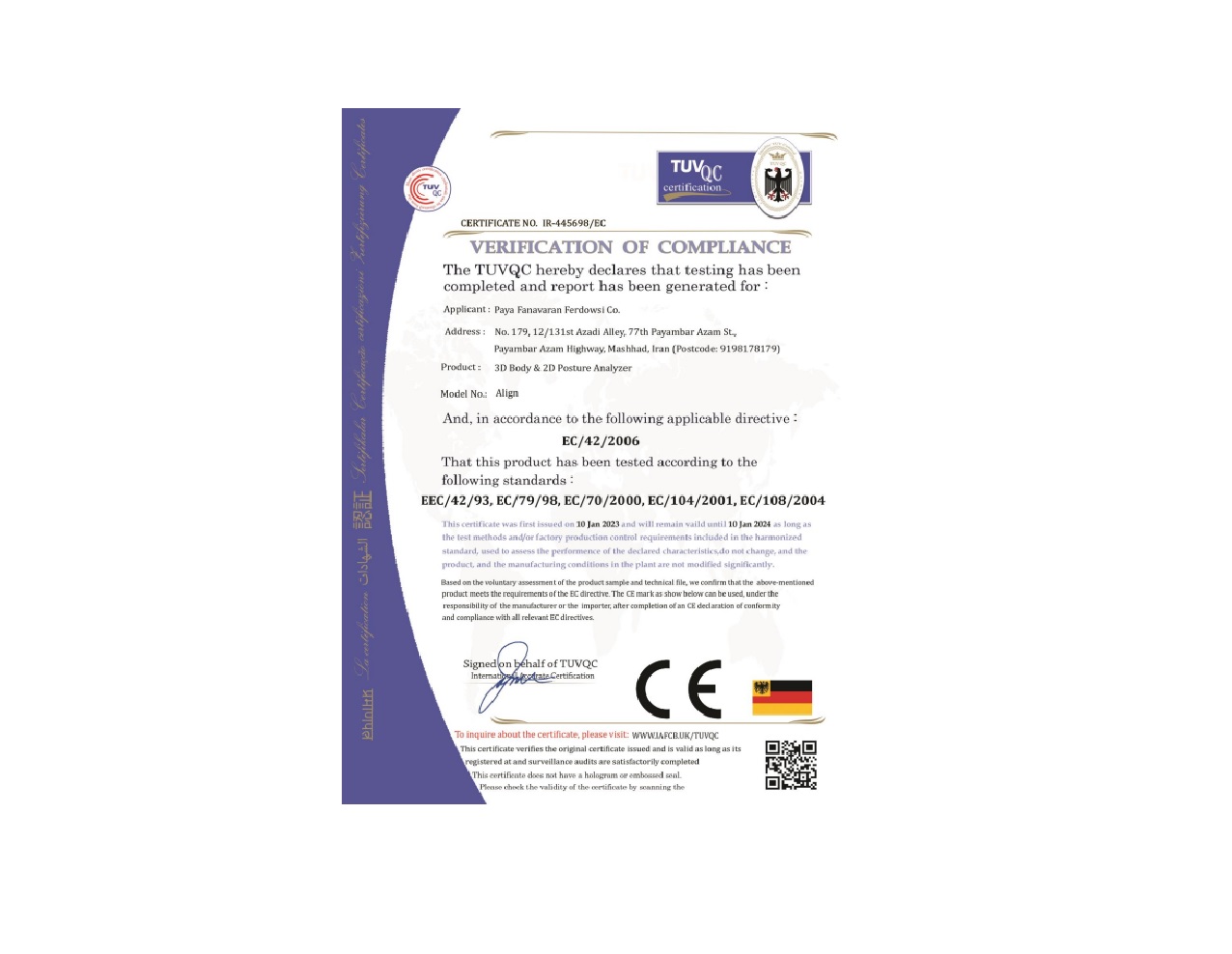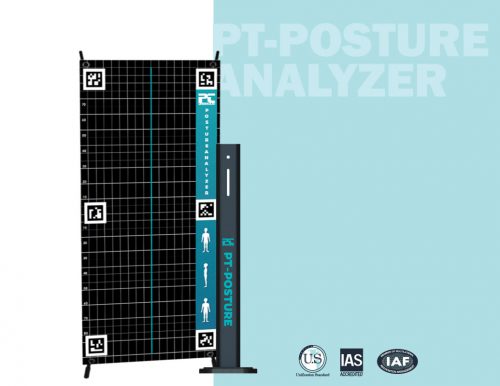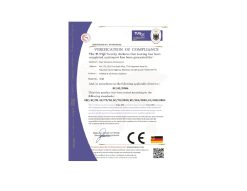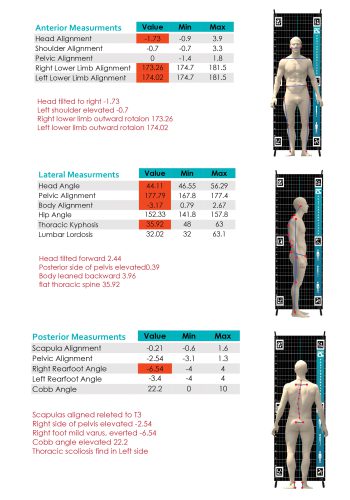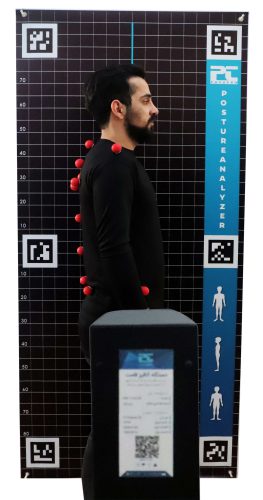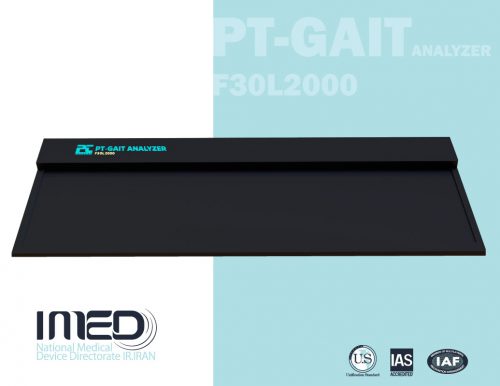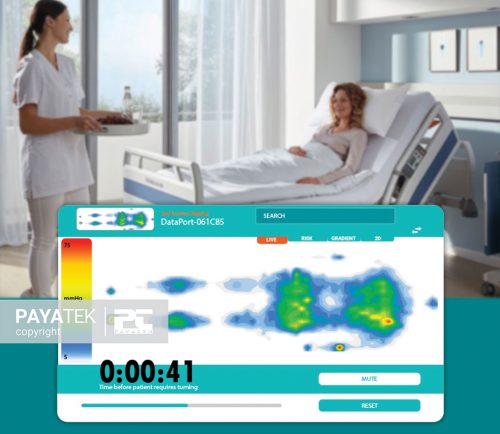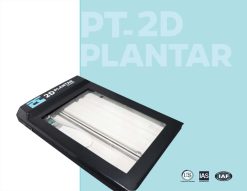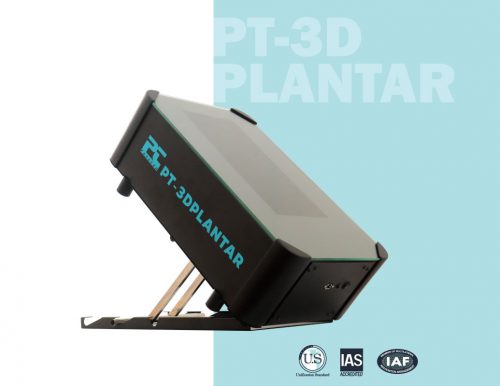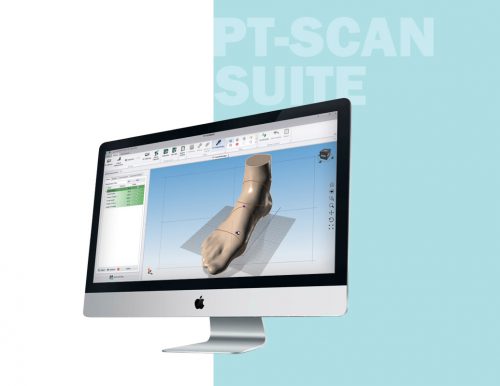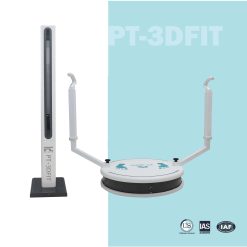What is a posture analyzer?
PT-Posture Analysis system is used to evaluate the human skeletal system and show the degree of anomalies or asymmetries. Using photogrammetric technology, the postural analysis device evaluates the anomalies of the spine and skeleton of the human body, the asymmetries in the human body and the deviations of the axis of the human body. The device includes a digital camera, calibration banner, markers and software as a simple user interface.

How to use a posture analysis system?
To use the posture analysis, the examiner is placed in front of the calibration screen naked or in thin clothing attached to the body. According to the protocol defined in the manual of the device, important points such as left or right tragus, left and right extremities, large trochanter of the left and right femur, left and right ankle (malleolus), etc. are marked with colored markers.
The camera mounted on the stand is located at a certain distance from the banner and is connected to the computer/software via a USB port. The person stands naturally in three views: front, back, and side of the device camera. In the software of the device, the images are recorded in three views and the amount of deviations and asymmetries are compared with the normal range, and if there is any anomaly, it is explicitly mentioned.
The features of PayaTek Posture Analysis System | PT-Posture Analyzer

The accuracy of each test is ensured by automatic calibration before each run
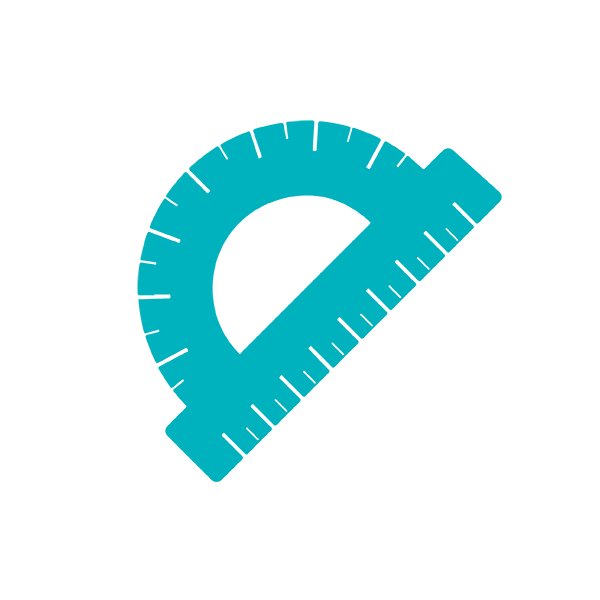
Indicate the exact quantity of postrural abnormality in degrees and millimeters

Numerical comparison of deviation with global normal limits

Take a video and measure angles on the frames
Using PayaTek Posture Analysis System, what can be observed?
Any kinds of skeletal abnormality (deviation and asymmetry) in the human body’s skeletal system that exceeds normal values can be diagnosed as a disease. PayaTek posture analysis system measure and detection:
- kyphosis
- Lordosis
- shoulder alignment
- pelvic alignment
- Knee angle (knee forward or backward)
- Head and neck angle (neck forward or backward)
- Any abnormal curve in shoulders
- VALGUS & VARUS
- And…
Why is automatic calibration so important in a posture analyzer?
It should be noted that the distance of the camera to the calibration banner and the angle of view of the camera to this banner is very important in common posture analysis device. Changes in this angle or distance can affect the test results! As a result, if the technology of the device is such that it can eliminate this dependence on environmental conditions, it can solve the biggest problems associatedwith using this device. PT-Posture Analyzer uses automatic calibration, allowing for the analysis to be performed as accurately as possible without worrying about moving the device.
Why Posture Analysis is important?
Posture analysis is how you hold your body. Good posture is more than just standing up straight to look your best. It is an important part of your long-term health. Abnormal posturing refers to rigid body movements and chronic abnormal positions of the body.
Many abnormal postural behaviors are the result of a serious spinal cord or brain injury. Postural analysis tests are part of kinesiology, the branch of physical therapy that focuses on studying the body’s anatomy and the physiology of how the body moves.
A posture analysis system is a reliable and accurate way to examine the posture position, detect current abnormalities, and avoid future problems.
PT-Posture Analyzer is a user-friendly device that can:
- Create a profile for the client
- Compare the test result during the treatment
- Examine the patient’s recovery process
- Calibrate automatically
- Present 1 degree and 1 millimeter accuracy
- Indicate abnormality of the skeletal system
Posture Analysis in orthopedics
Orthopedics is a branch of surgical science that deals with the movement system of the body. The locomotor system includes bones, joints, muscles, and other tissues that exist in the locomotor organs. An orthopedic physician, who is also called a bone and joint specialist, a bone and joint surgeon, or an orthopedist, tries to treat the problems of the body’s movement system using surgical and non-surgical methods. Therefore, the use of the posture analysis device in examining the client’s spine and skeleton is effective in order to make a more accurate initial diagnosis of the disease, provide a treatment plan, and check the recovery and effectiveness of the treatment process. PT-Posture analyzer prevents the referral of many clients who do not have severe complications to radiology.
Posture Analysis in physiotherapy
Physiotherapy is a science that not only plays a role in improving people’s quality of life but can also prevent damage. It is both part of the rehabilitation system and plays a role in acute care. In addition to maintaining motor functions, management of chronic diseases and education of the patient and their caregiver are also active. Therefore, the use of PT-posture analyzer in examining the spine and skeleton of patients is effective in preventing or more accurately diagnosing the disease. It is also effective to provide a treatment plan and check the recovery and effectiveness of the treatment process.
Posture Analysis in sports
In the systematic methods of identifying sports talent, sports structures provide a nurturing environment for athletes’ development. Individuals are directed to fields that are right for them, physiologically and psychologically. Therefore, recognizing a talent, especially in the field of sports, requires a detailed examination of the athlete’s physical structure. Considering this posture structure and providing appropriate exercises and periodic examination of athletes, it can clarify the path of developing talents for medical and sports specialists.
Posture analysis in students’ health screening
When a student adopts an appropriate posture, they not only increase their ability to concentrate but they also performs mentally and retains the information better. Early detection of abnormal posture in students is so important. Investigating the causes and wrong habits related to abnormal posture in a student and providing a model for correction are of great importance. Using PT-Posture analyzer to analyze posture abnormalities in schools and regular, and periodic monitoring of students can prevent major skeletal and spine problems in the coming years of their lives.

Who are the users?
Physicians and specialists in fields of stature skeletal structure and spine are the main users of the posture analysis device. These specialists include:
- Orthopedic surgeons
- Physiotherapists
- Technical orthopedic specialists
- Medical-sports specialists
- Sports coaches
- Children and adolescents’ health screening devices

 فارسی
فارسی
